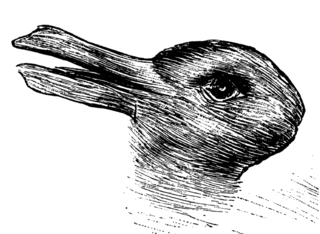Gratitude
The Power of Positive Expectations
Science shows what we expect, we detect—and what we believe, we perceive.
Posted October 9, 2022 Reviewed by Jessica Schrader
Key points
- Your expectations can determine your experience.
- What you pay attention to changes your perception.
- You can change both expectations and attention to increase happiness and well-being.
“What you see reflects your thinking, and your thinking but reflects the choice of what you want to see.” –A Course In Miracles
We live in a world that operates much like an echo chamber. What goes out comes back to us over and over again. If you think about how the world looks and feels to you when you are in a good mood—and when you are in a sour mood—you’ll have a sense of how this works. It begins with what you put out. If we are joyous, hopeful, or grateful, we see joy, hope, and gratitude. If we are uncertain, anxious, and hopeless, we see through goggles that present a world of despair. Our expectation of what is to come does the job of interpreting the world for us. Our reaction then loops into a confirmation bias. This means we will experience the world as expected. Our beliefs and expectations about what is to come get confirmed by our experience. There is a loop. It is bidirectional—meaning that the interpretation creates the experience confirming the interpretation. It’s almost as if we are responding to a form of self-hypnosis. Good or not-so-good, you put what you believe you are experiencing into the world, and the world will confirm it.
In researching Learned Hopefulness: The Power of Positivity to Overcome Depression, I found studies beautifully demonstrating this fact. Research using hypnosis shows how powerful expectations are. In one study, subjects were hypnotized and told they would be touched very briefly with a lump of hot coal. The researchers then touched the subjects with an ice cube. Immediately the participants formed a blister where they were touched.[ii] Anticipating something bad would happen put them in a state where they felt they had to protect themselves—even when there was no need to—and there were consequences. This power of expectation also works protectively. Under hypnosis, subjects allergic to various substances were found able to inhibit a reaction when told they would not be affected.
In these studies, the stimulus was perceived differently based on what was expected. An ice cube can cause a blister if it is expected to burn us, and an allergic reaction can be neutralized if the allergen is perceived as harmless. How we expect something will deeply influence how we respond. This is particularly true when we think about our future. What we expect is what we detect—what we believe, we perceive.
To demonstrate, look at this duck drawing and notice how long his beak is. Now, look at the same image, and what if I asked you to look at the rabbit’s nose and how long his ears are? If you let your eyes drift over to the right, the “duck” becomes a “rabbit,” and then shifting back, the image becomes a duck. The image, the stimulus, and the input didn’t change—but how you looked at it did. What you expected is what was detected. You saw two completely different animals because of expectations—and what you directed your attention to. If I had told you to look at the rabbit first—that is what you would have initially seen. Expectations create the experience.

What you perceive with the duck/rabbit depends on where you focus. Two different animals facing opposite directions. Your experience changes depending on what you centered on. If you want to see a duck—keep staring at the beak. If you like rabbits, look the other way. You can choose how it will be seen.
You can also choose how you think about your future. In fact, research on how we think about ourselves in the future increases positive feelings in the moment and positive future expectations. Imagining a positive future self creates an expectation that results in greater optimism, higher life satisfaction, less depression, greater happiness, and well-being.
The technique for doing this is known as the best-possible self, and I’ve written about how to do it and a fun alternative here.
Your thoughts are not happening to you—they are happening for you. Learning how to harness the power of positive expectations allows you to use your thoughts like a powerful flashlight to find the best path forward. Here is a way to begin cultivating positive expectations. It starts with knowing there is an alternative way of experiencing a situation.
Changing How You Think
1. When you are in a negative mood and cannot see or take in positive experiences, challenge your perception by using the sentence, “There is another way to look at this.” This declarative sentence allows your thoughts to be challenged by opening up the possibility of an alternate way of seeing the situation. It is like reminding you that there may be another way of seeing this image than as a duck.
2. Make a list of these other (more positive) ways of seeing the situation as viable and acknowledge them.
3. Finally, deliberately take time to review the items on your list and allow yourself to feel gratitude for these more positive ways of viewing the situation. This is known as deliberate rumination and, along with gratitude, has been found to change how we think about negative experiences.
Creating opportunities for positive expectations is a skill that can be developed. As Thoreau said, “The question is not what you look at, but what you see.”
References
D.G. Hammond, “Integrating Clinical Hypnosis and Neurofeedback,” American Journal of Clinical Hypnosis 61:4 (2019), 302–321.
Heekerens, J. B., & Eid, M. (2021). Inducing positive affect and positive future expectations using the best-possible-self intervention: A systematic review and meta-analysis. The Journal of Positive Psychology, 16(3), 322-347.
G. L. Paul, “The Production of Blisters by Hypnotic Suggestion: Another Look,” Psychosomatic Medicine 25(3) (1963): 233–244.
Tomasulo, D. (2020). Learned hopefulness: The power of positivity to overcome depression. New Harbinger Publications.
Kim, E., & Bae, S. (2019). Gratitude moderates the mediating effect of deliberate rumination on the relationship between intrusive rumination and post-traumatic growth. Frontiers in Psychology, 10, 2665.
Carrillo, A., Rubio-Aparicio, M., Molinari, G., Enrique, A., Sanchez-Meca, J., & Banos, R. M. (2019). Effects of the best possible self intervention: A systematic review and meta-analysis. PloS one, 14(9), e0222386.




